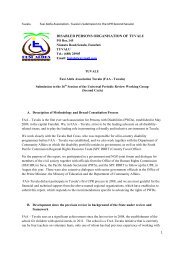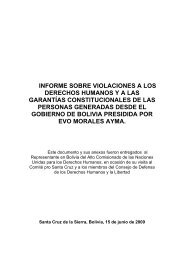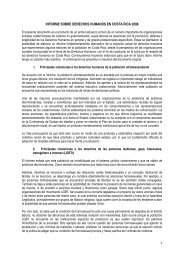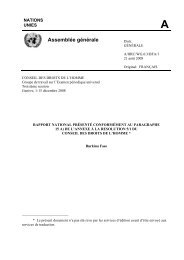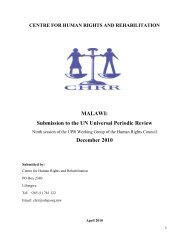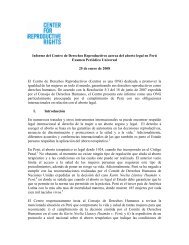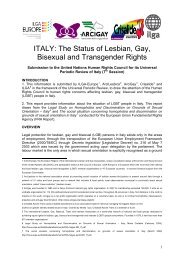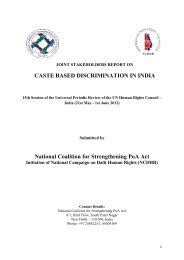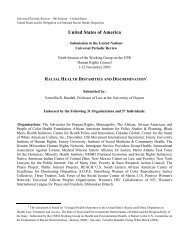Prison Needle Exchange: Lessons from a Comprehensive Review ...
Prison Needle Exchange: Lessons from a Comprehensive Review ...
Prison Needle Exchange: Lessons from a Comprehensive Review ...
Create successful ePaper yourself
Turn your PDF publications into a flip-book with our unique Google optimized e-Paper software.
• do not increase drug consumption or injecting<br />
• reduce risk behaviour and disease (including HIV and HCV) transmission<br />
• have other positive outcomes for the health of prisoners<br />
• have been effective in a wide range of prisons in six countries<br />
• have successfully employed different methods of needle distribution to meet the needs<br />
of staff and prisoners in a range of prisons<br />
Not only are needle exchanges a proven effective public health measure for reducing the<br />
harms associated with injection drug use, including HIV and HCV transmission; federal and<br />
provincial/territorial governments in Canada have a legal obligation to respect, protect, and<br />
fulfill prisoners’ right to health. This right is recognized in interna-<br />
tional law, and includes the right to preventive health-care measures.<br />
In the context of the HIV/AIDS epidemic, needle exchange programs<br />
have been proved an effective preventive health measure for<br />
those at risk of HIV infection. Given the persistence of illicit drug<br />
use in prison, and the evidence of needle sharing among prisoners<br />
who inject drugs, prison needle exchange programs are crucial to<br />
the right to health for prisoners who inject drugs.<br />
In addition, there are sound reasons to believe that prison needle exchange programs are<br />
cost-effective and would even result in cost savings for Canadian governments.<br />
Canadian governments should make important public health decisions based on the evidence<br />
and their legal obligations, not on public opinion or political expediency. Nor should<br />
elected or prison officials make a decision about prison needle exchange programs by ignoring<br />
the evidence and their legal obligations, as has been the case for too long in Canada.<br />
Leadership <strong>from</strong> elected officials and prison authorities is required. Leadership is also<br />
required <strong>from</strong> individual prison staff, both correctional staff and health service staff, and<br />
<strong>from</strong> outside physicians who work in prisons. Governments in Canada, and in particular<br />
CSC, have been among the leaders in introducing harm-reduction measures in prisons.<br />
Individual prison systems in Canada have already introduced condom and bleach distribution<br />
and MMT, and provide HIV education to prisoners and staff – although work needs to<br />
be done to ensure that prisoners throughout Canada have reliable access to such measures.<br />
Despite the debate and resistance that surrounded the introduction and implementation of<br />
harm-reduction measures, they are now widely accepted as part of the prisons systems’<br />
responsibility to prisoners and have not compromised institutional security and good order<br />
in Canadian prisons. The existence of these measures and the experience of their implementation,<br />
along with international experience of and evidence <strong>from</strong> prison needle exchange programs,<br />
represent the building blocks for the introduction of needle exchanges in Canadian<br />
prisons.<br />
Recommendation<br />
Canadian prisons should<br />
implement needle exchange<br />
programs without delay.<br />
Both federal and provincial/territorial correctional services in Canada should immediately<br />
take steps to implement multi-site pilot needle exchange programs.<br />
<strong>Needle</strong> <strong>Exchange</strong> Programs Should Be Implemented in <strong>Prison</strong>s in Canada 65



